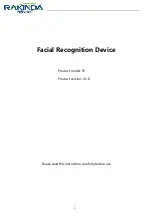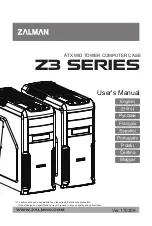
An EyeLink Portable Duo Tutorial: Running an Experiment
©
2016-2017 SR Research Ltd.
69
cursor.
In addition to the C examples, other programming languages and tools can be
used to display experiment stimuli and talk to the eye tracker. For example,
Experiment Builder supplies some template experiments (installed at
"C:\Users\{User Name}\Documents\ExperimentBuilder Examples" for Windows
7, or "Documents\ExperimentBuilder Examples" on Mac OS X). Each of these
experiment templates illustrates a typical experimental paradigm. The following
table provides a brief description of the experiments. See the SR Research
Experiment Builder User Manual for a detailed description of each template's
operations.
Experiment Purpose
Simple
The basic experiment template, displaying a single word in the
center of the screen in each trial. This example is used to
introduce how to create an experiment with SR Research
Experiment Builder step by step.
Stroop
The basic template for creating non-EyeLink experiments. This
template illustrates the use of a results file, RT calculation, and
audio feedback, etc.
Picture
Illustrates various parameter settings for showing an image on
the screen (in original size versus stretched, centered versus not
centered).
TextLine
Experiment to show a single line of text, illustrating the use of
runtime interest area segmentation.
TextPage
Experiment to show a full screen of text using a multi-line text
resource.
GCWindow
Demonstrates how to use real-time gaze position to display a
gaze-contingent window.
Track
Displays the user's current gaze position during recording and
illustrates how to set the resource position contingent on the
current gaze position.
Change
Displays several almost-identical screens rapidly. It also
illustrates the use the of the fixation trigger.
Saccade
Illustrates the creation of a simple experiment for saccade/anti-
saccade research.
Pursuit
Illustrates several kinds of sinusoidal movement in a pursuit
task.
















































